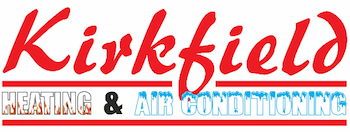
Would you believe that more than 50 percent of your home’s energy costs are for your heating and cooling? This is the reason why it’s so important to secure an energy-efficient HVAC system.
Furnace efficiency standards were last modified to an Annual Fuel Utilization Efficiency (AFUE) rating of 80% in 2015. This rating system illustrates how effective your furnace is at natural gas into heat. An AFUE rating of 80% means your furnace will waste about 20% of the fuel it uses while creating heat.
In 2022, the Biden Administration revealed new energy-efficiency standards for residential gas furnaces that would substantially reduce emissions, save money and encourage sustainability.
The updated standards are estimated to:
- Save Americans $1.9 billion annually.
- Cut carbon emissions by 373 million metric tons and methane emissions by 5.1 million tons over three decades, the equivalent of what 61 million homes emit annually.
Starting in 2029, the updated rule would demand all new gas furnaces to feature AFUE ratings of 95%. This means furnaces would turn nearly 100% of the gas into usable heat.
So what does all of this mean for your existing furnace in 2023? Currently, next to nothing, as the proposed rule will not go into effect until 2029 at the earliest and does not affect furnaces that are already in use.
But if you are considering furnace replacement in soon, highly energy-efficient furnaces are now available. Learn how these furnaces can help you save on energy bills now.
Guide to Condensing Furnaces
How Condensing Furnaces Work
A condensing furnace is a type of heating system that uses a secondary heat exchanger to capture wasted heat from the furnace's exhaust gases. This reduces the quantity of energy wasted, enhances energy efficiency and lowers CO2 emissions. It also involves less natural gas to create the same rate of heat compared to other types of furnaces.
How Condensing Furnaces Differ from Non-Condensing Furnaces
The main difference between a condensing furnace and a non-condensing furnace is condensing models use a secondary heat exchanger to gather any wasted heat from its exhaust gases, while the latter does not.
Expected Longevity of a Condensing Furnace
The life span of a condensing furnace depends on the brand, model and other factors. Generally speaking, a condensing furnace should last between 10-20 years with proper maintenance and regular service. If your heating system doesn’t have regular furnace maintenance, the unit may struggle to perform as well, ultimately failing earlier than anticipated.
Why Condensing Furnaces Cost More
Usually, condensing furnaces type of system is much more efficient than conventional furnaces, as it only utilizes the minimum amount of energy needed to heat your home, which subsequently saves money on your utility bills.
Many variable-speed furnaces are condensing furnaces, although a handful are available in non-condensing models with lower AFUE ratings. In order for a furnace to be classified as a condensing furnace, it must offer an AFUE rating of 90% or higher.
Do Variable-Speed Furnaces Run Constantly?
A variable-speed furnace doesn’t run all the time. Instead, it runs at different speeds depending on the temperature in your Winnipeg home as well as the amount of energy it needs to maintain that temperature.
When sufficient energy is required to maintain your set temperature level, the furnace will switch to a higher speed to manage the higher demand. Precise fan speeds offer more efficient heating in your home while also providing quieter operation.
Guide to Two-Stage Furnaces
Two-Stage Furnaces: What They Are and How They Work
A heating system with two settings of operating - high and low - is called a two-stage furnace. In the low stage, the furnace operates at a reduced capacity in order to maintain the preferred temperature in your home more efficiently. During the high stage, the furnace will instead operate at full capacity to satisfy demands for increased heat. With a two-stage furnace, you can experience improved energy efficiency and stable temperatures all across your home.
While two-stage furnaces are exceptionally efficient, not all all models are condensing furnaces.
Does a Two-Stage Furnace Operate All the Time?
A two-stage furnace should not run constantly. In the low stage of operation, the furnace runs at reduced capacity in order to maintain a desired temperature more efficiently within your home. When additional energy is needed to maintain the set temperature, the unit shifts to its high stage and runs at full capacity. As such, two-stage furnaces are able to help reduce energy costs without operating constantly.
Differences Between Two-Stage and Variable-Speed Furnaces
Two-stage furnaces have two stages of functionality, low and high. During the low stage, the furnace runs at reduced capacity as a way to maintain a desired level of comfort within your home. When more warmth or cooling is needed, the furnace will switch to its high stage and operate at maximum capacity.
Variable-speed furnaces, meanwhile, can function at multiple speeds in order to maintain a desired temperature more consistently at home. With more options for temperature settings, you also have more flexibility for heating you home and can enjoy greater savings on energy bills.
Differences Between One- and Two-Stage Furnaces
One-stage furnaces have a single stage fan speed and operate either at full capacity or not at all. As a result, the furnace runs constantly in order to maintain a desired comfort level within your home.
Two-stage furnaces, on the other hand, have two stages of operation, low and high. While in the low stage, the furnace runs at lower capacity in order to maintain the desired temperature more efficiently. When a greater demand for warmth or cooling is desired, the furnace will switch to its high stage and operate at maximum capacity.
Arrange Your Furnace Install Appointment with Kirkfield Heating & Air Conditioning Today
It takes experience and dedication to stay up to date about furnace technology advancements. That’s why Kirkfield Heating & Air Conditioning experts are here to help with a free, no-pressure quote for furnace installation. We’ll assess your home, your heating requirements and your budget before helping you find the ideal solution. Contact us at 204-272-8128 to get started today!




